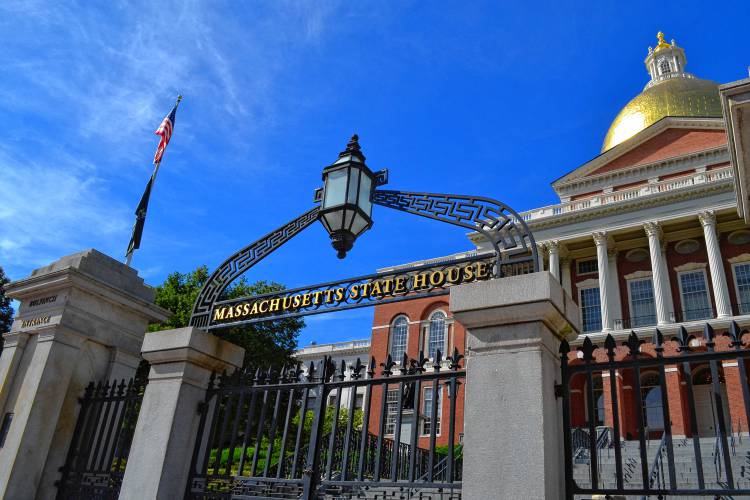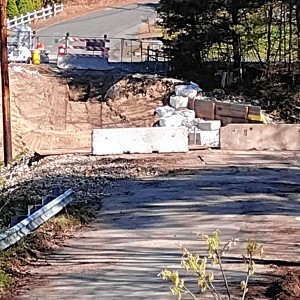Shelter report shows waitlist growing in Massachusetts

The Massachusetts State House in Boston
| Published: 01-05-2024 4:45 PM |
BOSTON—Despite top officials’ claims this fall that the number of migrant families coming into Massachusetts was decreasing, thousands of families continue to apply for placement in the state’s emergency shelter system.
Since Nov. 10, 1,393 families have applied to live in Emergency Assistance housing, according to a new report from the Healey administration.
The number of homeless families in need of shelter has exploded in the past year, largely driven by an influx of immigrants coming into the country legally but unable to work under federal immigration laws.
With the state on the cusp of its coldest months of the year, Emergency Assistance Director Scott Rice said Nov. 30 that the “trends are going down” for families coming to the Bay State.
“Some time in October, the numbers [of people] coming into the state started to go down. After that, we put a cap in place. After that, the weather got cold,” he said. “So I don’t know the relationship between them all yet. I need more time to actually really answer that question.”
The number of applicants into emergency shelter began steadily rising in late 2022, and peaked last spring and summer. Approximately 22 families are arriving per day now, down from about 35 to 40 per day in late summer, according to an Executive Office of Housing and Livable Communities spokesperson.
A breakdown of how many of the 1,393 families that have applied to live temporarily in the EA system have been accepted into shelter, placed on a waitlist, or deemed ineligible and turned away altogether was not available Tuesday afternoon, the EOHLC spokesperson said.
Despite a state right-to-shelter law, Gov. Maura Healey unilaterally capped the shelter system at 7,500 families this fall. That waitlist has also been rising, jumping from 242 on Dec. 12 until reaching 391 by Dec. 28.
Article continues after...
Yesterday's Most Read Articles
 Sportsman’s Corner: The quest for the Super Slam
Sportsman’s Corner: The quest for the Super Slam
 Cryptozoology exhibits featured at Education Earth Museum
Cryptozoology exhibits featured at Education Earth Museum
 Athol Police Logs: April 12 to April 19, 2024
Athol Police Logs: April 12 to April 19, 2024
 Athol Royalston Middle School Honor Roll Term 3
Athol Royalston Middle School Honor Roll Term 3
 Work on Pinedale Avenue Bridge connecting Athol and Orange to resume
Work on Pinedale Avenue Bridge connecting Athol and Orange to resume
 Longtime public servant Richard Sheridan dies at 78
Longtime public servant Richard Sheridan dies at 78
The new report from the Healey administration offers details on what happens to families that are eligible for emergency shelter but placed on the waiting list and deprioritized amidst a shortage of units in which to place families.
“Families on our waitlist are provided assistance with transportation to locations within Massachusetts of their choosing and information on additional state resources and assistance in finding housing,” the report said. “For example, EOHLC administers the HomeBASE program, which can provide eligible homeless families with help paying first/last month’s rent and security deposits, moving expenses, stipends to help with ongoing housing costs, and other costs that can help families stabilize an existing housing situation or stably rehouse.”
The housing secretariat also partners with the Department of Transitional Assistance and MassHealth to connect families with available benefits, it said.
“Lastly, when space is available, families on the waitlist are offered overnight shelter at state-run overflow sites – in Quincy, Revere, and Cambridge – as well as through sites administered via our partnership with the United Way,” the report said.
The report released Tuesday is the second in a series of newly-required reporting on the EA system, which lawmakers mandated of Healey as a condition of directing more money to the shelters in December.
Lawmakers steered $250 million more into the shelter system this winter, and the mid-December report suggested that more than $350 million in additional funds may need to be authorized to keep the system funded through June and to “avoid imminent run-out dates for key programs.”
In what has quickly become a more and more expensive line item, the latest report also shows that the state has spent an additional $42 million on the shelter system in just the two weeks since mid-December.
The mid-December report said $205 million had been spent on emergency assistance housing in fiscal year 2024; Tuesday’s report reveals $247 million has been spent on the program this fiscal year. These numbers only reflect costs through November, as “November and December invoices are currently being received and processed,” the report says.
The Legislature and Healey in July appropriated just $325 million for emergency shelters in the fiscal 2024 budget—meaning costs are quickly approaching the initial appropriation amount about halfway through the fiscal year.
Spending includes the costs of shelter and associated services, National Guard activation, clinical and safety risk assessment sites, temporary emergency shelters and family welcome centers.
Healey has repeatedly said her administration is focused on getting work authorizations to help migrants who are eager to earn the money needed to leave the state shelter system and support their families financially. According to the new report, the number of people living in shelters who can legally work in the U.S. has more than tripled.
As of Dec. 12, 813 migrants, refugees and asylum seekers in the EA system were authorized to work in the U.S.; by Dec. 28, that number had grown to 2,713.
The Healey administration and the U.S. Department of Homeland Security hosted clinics in November to help immigrants work through the authorization process, and said 2,910 individuals received help.

 UMass student group declares no confidence in chancellor
UMass student group declares no confidence in chancellor State Senate budget funds free community college for all
State Senate budget funds free community college for all